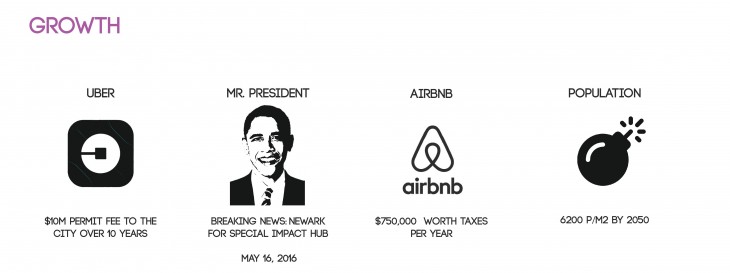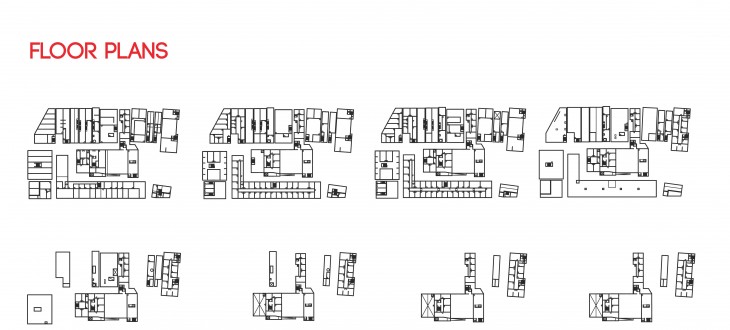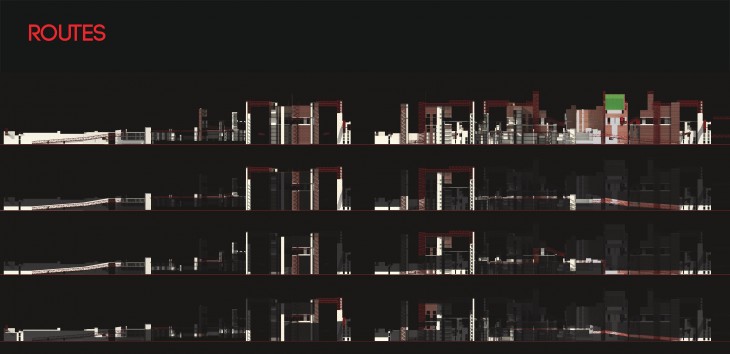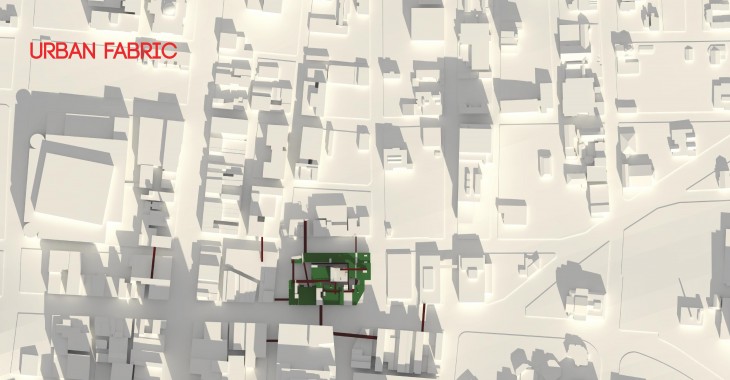Happening in Newark, NJ; this project is an outcome of an extensive research done on Megacities and Programmed Collapse. After studying what a megacity is – a metropolis or more than one metropolis merged together, a megacity is usually defined by a minimum of ten million inhabitants- and what a collapse is – as utilitarian collapse, threshold value collapse, or complete breakdown – of which we studied to infer what a programmed collapse might be and how can a collapse become a design tool.
Mobility was the case study we did throughout the preliminary research phase; urban mobility in Newark. What can collapse in an urban environment as a cause of urban mobility? How can the mobility system in the city collapse? How is data affecting how cities are evolving? How is technology shifting the paradigm in the world of cars, roads, networked systems…? What is the influence of new sharing platforms on traffic in the city? and finally; How would the future look like?
As a team doing what was mentioned we concluded each in a personal project, keeping the same research ground, the projects include a building scale project, a block+ scale project and an urban scale project.
DENSITY is the major animator of growth and development of cities, density means more demand, more and more, all the time, in a pace sometimes faster than the growth of the infrastructure.
HOW WE READ THE CITY has a lot to how we experience the city, how we design buildings, economic networks, programme distribution… we’ve been displaying cities as 2D, which influenced our circulation in the city, on a “ground level”. Highrise buildings? they look pretty much as a point in a city plan, you go up and down, no lateral displacement. Trajectories in a city are defined by the programme distribution in a city, this tension between places causes a certain flow of people. Its time to think in 3D about cities, to rethink cities as a complete whole, as one object.
URBAN INTERIORS emerge out of density! Museums, Stations, Markets…All these programmes are becoming public interior spaces, and with all the sharing platforms emerging – car sharing, desk sharing, room sharing…- to the smallest property. All this happening at simultanously, is a major indicator that how we perceive architecture, the urban context and public space is certainly changing. This project tends to study all the circulation inside a block, from the city within to understand how people move, and afterwards, change some private to public, tweak some spaces, and change the nature of the existing block.
METOUSIOSIS is a Greek term (???????????) that means a change of ????? (essence, inner reality).
As a quick description of the project; it is a collection of interventions, that are the outcome of a system that translates how people experience the city, and how the city is evolving to possible changes. Changes happen on the level of architectural elements, such as walls, slabs, stairs, to materiality – changing some surfaces to change the utility- and finally adding possible connections from one space to another which are to grow to neighboring blocks and overtake the city in the future – not to mention the emergence of new programmes on different levels which as well is an indicator to the evolution and the interventions made on the block.
This is the story of a block that was a collection of introverted vacant buildings, tweaked to become a super-block, an organism that is a center in the city, where public life and circulation takes place on different levels.




































The video shows how the pedestrian flow changed from the data visualization above – before interventions – to the new urban model – after the interventions
Layering the block


This video is a zoomed in panning – walkthrough- to show probable routes inside the block. This is one continous unfolded section.



INTERVENTIONS DIAGRAMS






Faculty:
Willy Muller
JordiVivaldi Piera
Starsky Lara
Student:
Firas Safieddine
Intelligent Cities
2016
IaaC
